Location services
Powered by nRF Cloud
Location services are the cornerstone for devices being able to position themselves accurately, quickly and efficiently. By utilizing our single-cell (SCELL), multi-cell (MCELL), assisted GPS (A-GPS), predicted GPS (P-GPS) and/or Wi-Fi location features, customer's devices can determine their location while balancing accuracy and power consumption.
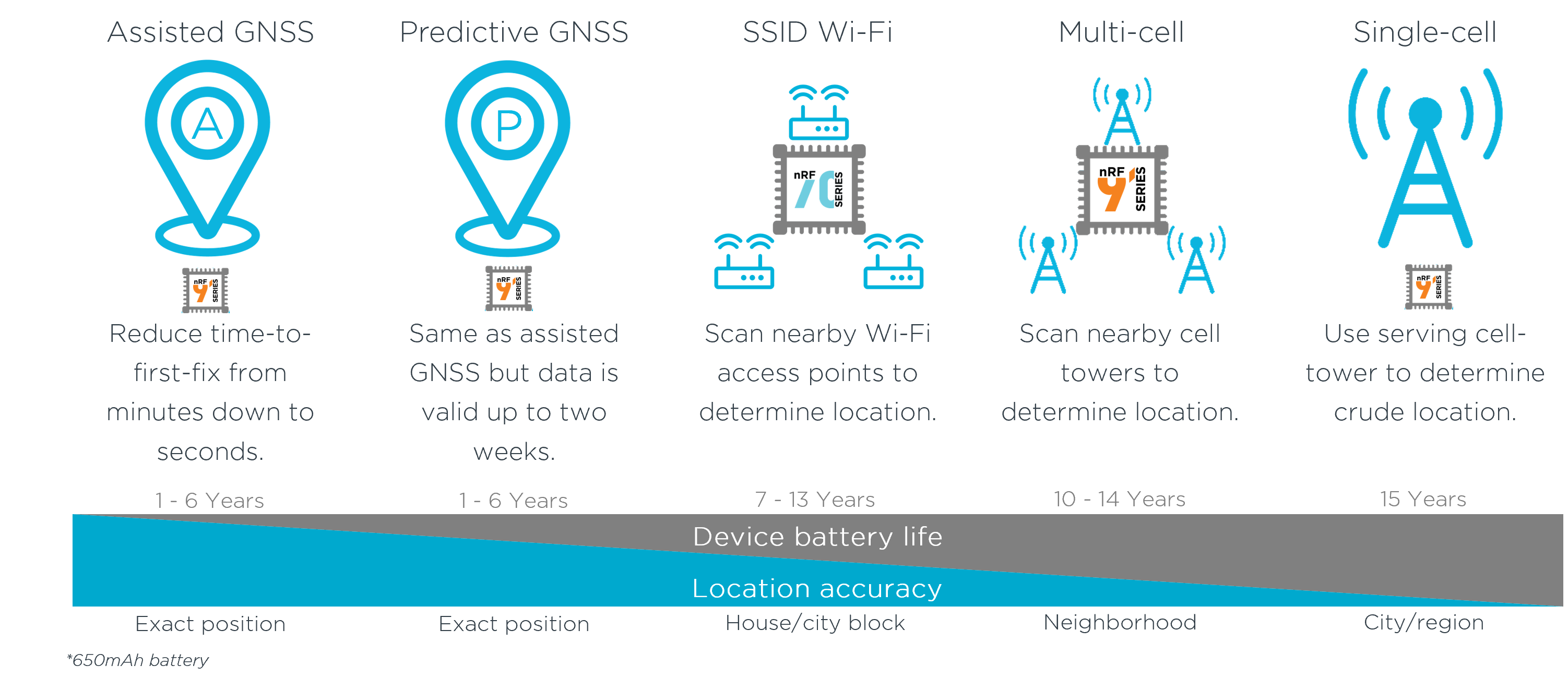
Read more about location services or dive into our location performance comparison on the DevZone blog.
Platform Security Architecture (PSA)
Certification
Among the first to gain PSA Certification
The nRF9160 SiP was among the first solutions to become Level 1 PSA Certified in the PSA certification scheme.
Today the nRF9160 SIP is PSA Certified for Level 2.
For more information read the nRF9160 SiP PSA certification news release.
Cellular IoT connectivity
Enhanced by Nordic
Unique modem firmware features solving real IoT challenges
At Nordic Semiconductor, we are dedicated to pushing the boundaries of ultra-low power in all our devices. We continuously enhance our firmware with innovative features that focus on optimizing performance, minimizing power consumption, and addressing specific challenges faced by cellular IoT applications. Our modem incorporates a range of advanced features designed to elevate the performance of your end applications. Here are a few examples of these game-changing features that deliver superior results.
Software SIM support
The nRF91 Series supports Software SIM, securely running on the application processor, with Onomondo as the first partner with their SoftSIM solution. This innovative technology brings numerous benefits, including cost savings by reducing SIM and bill-of-materials (BoM) expenses, simplifying the design process, and lowering power consumption. With SoftSIM, the need for physical SIM cards and SIM sockets is eliminated, resulting in a streamlined and compact end-product design. For more detailed information, please refer to the news release Nordic Semiconductor and Onomondo bring ‘world’s first’ software SIM to low power cellular IoT and our nRF Connect SDK 2.5.0 webinar that includes a demo showcasing the Software SIM power consumption benefits.
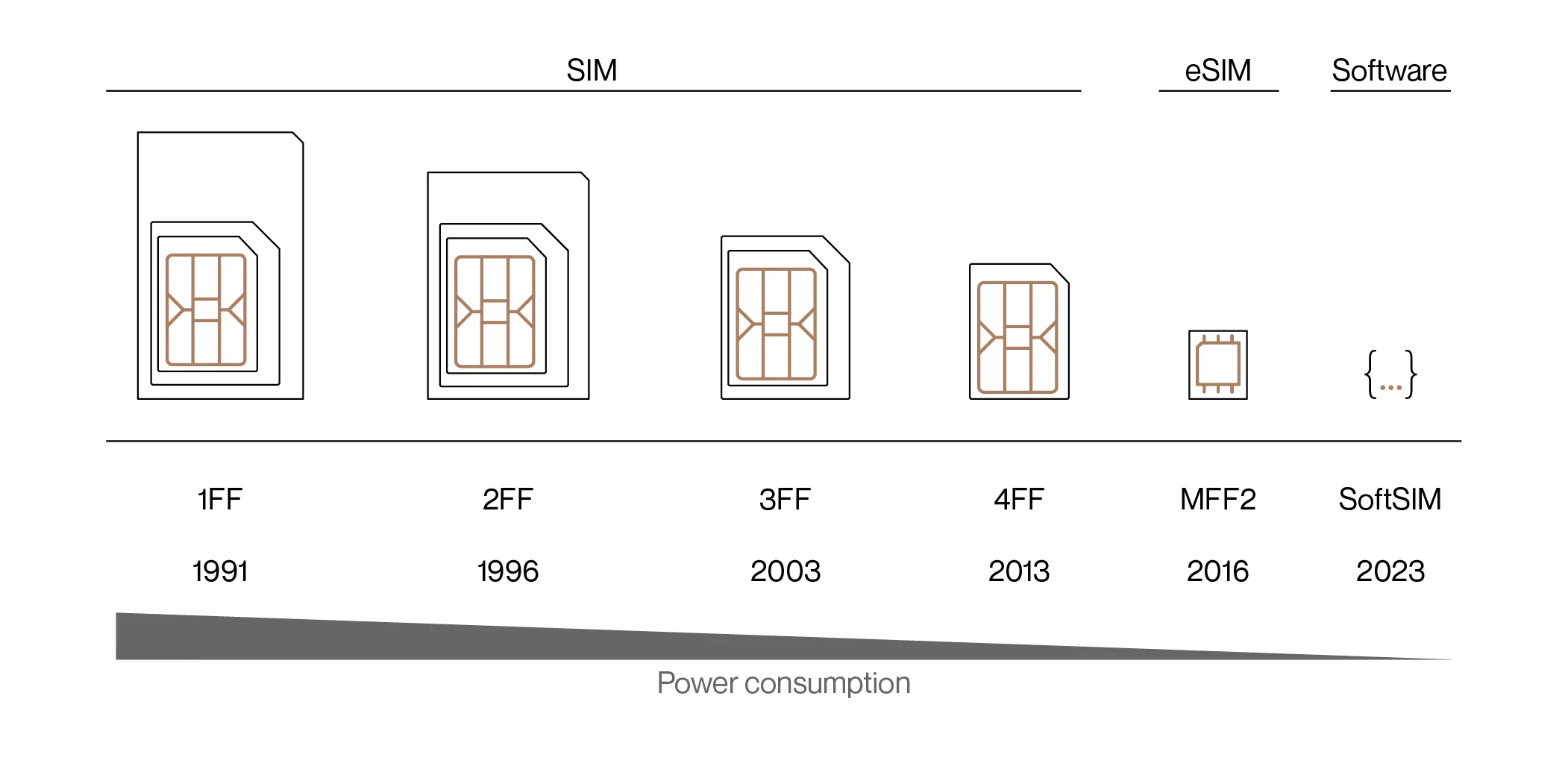
Power Saving Mode (PSM) for roaming devices
This is a game-changing feature for global cellular deployments, as it enables PSM-like sleep mode even in network environments where normal PSM usage is not supported, such as with roaming SIM cards. This avoids the need to brute force shutdown the model, as our system is intelligently designed to handle power-saving transitions smoothly, providing outstanding benefits in power consumption.
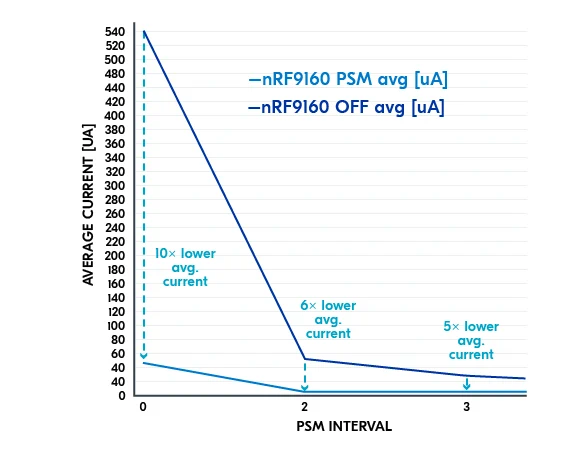
When this mode is activated, it will seamlessly switch to normal PSM when available from the network ensuring optimal power-saving capabilities at all times.
Pre-evaluation of a connection
Experience enhanced power management with our modem's pre-evaluation feature. Before connecting and transmitting data, our modem evaluates the estimated power consumption it would most likely use when sending data, and provides valuable insights in the form of estimate categories (Excellent, Good, Normal, Poor, or Bad Conditions) and raw parameters such as radio link quality, RSRP, RSRQ, SNR, CE level, TX Power, repetitions, pathloss, and more.
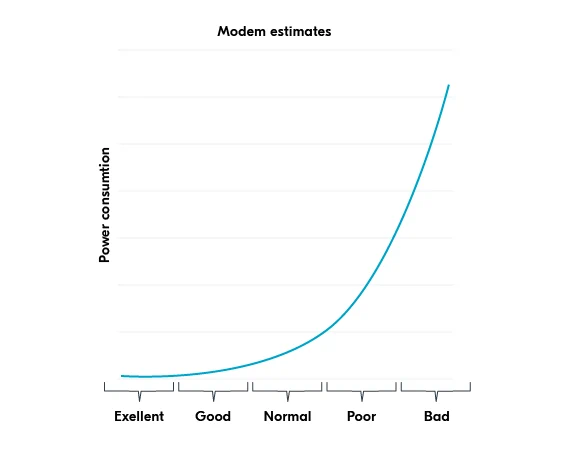
By analyzing the radio environment on the downlink of a cell, your application can decide whether to send data to ensure energy efficiency in data transmission. This is available through the LTE Link Controller library or via the AT Command %CONEVAL, and more details on how to use this is described in the Energy Estimate guideline.
Improved NB-IoT connection management
Moving between base stations can be a disruptive and power hungry operation for NB-IoT devices. Our modem firmware has enhanced mobility support for NB-IoT devices, reducing the overall power consumption when changing to a different base station.
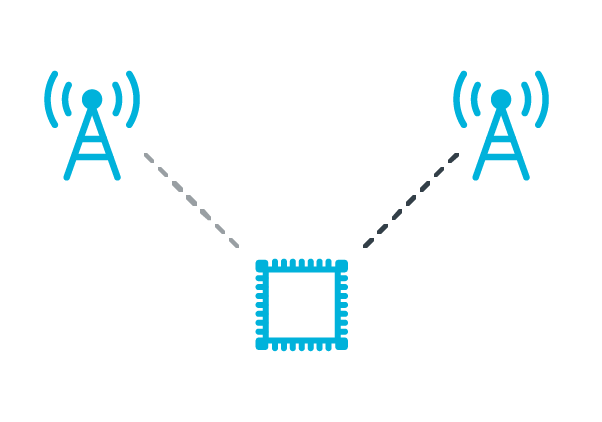
Conversely, if an NB-IoT device is static (e.g. utility meters), switching base stations is undesired, which can happen accidentally if there is a temporary drop in link quality to the closest base station. With our reduced mobility support feature the device stays connected to the same base station, avoiding the power consumption penalty of switching to a different base station and back.
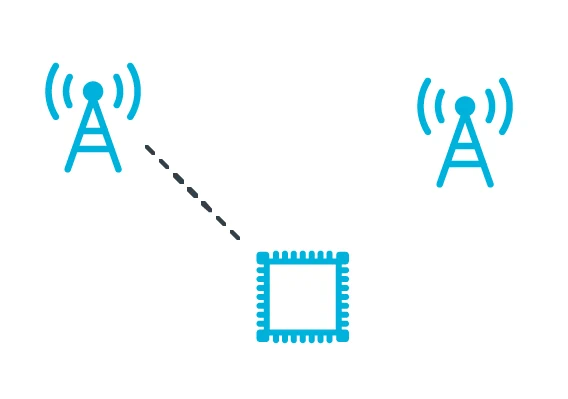
Country-specific search optimization
Make network selection seamless when moving to a new area or deploying cellular devices to a new location with our country-specific search optimization. Our modem enables faster network selection by storing essential information like Mobile Country Code, Bands, Radio Frequency Channel Number, and LTE-M/NB-IoT in a prioritized list. Using our Nordic-proprietary %XCOUNTRYDATAcommand, you can configure country-specific search parameters, which accelerate network selection in unfamiliar locations. If necessary, our modem will perform full searches to ensure service availability. Rest assured, our feature complies with 3GPP network selection rules defined in 3GPP TS 23.122, ensuring a reliable and efficient network connection.
Modem domain event notification
Stay in control of your modem's performance with our comprehensive modem domain event notification feature. Receive timely alerts for crucial events such as "SEARCH STATUS 1," "SEARCH STATUS 2," "RESET LOOP," "ME OVERHEATED," and "ME BATTERY LOW." These notifications play a vital role in decision-making, especially after a "Light search" (SEARCH STATUS 1), where the modem utilizes intelligent network selection algorithms. With these notifications, you can optimize power consumption, prevent overheating, and ensure uninterrupted connectivity. Gain valuable insights into your modem's behavior and make informed choices with our modem domain event notification feature either through the LTE link Controller library or AT Command %MDMEV.
